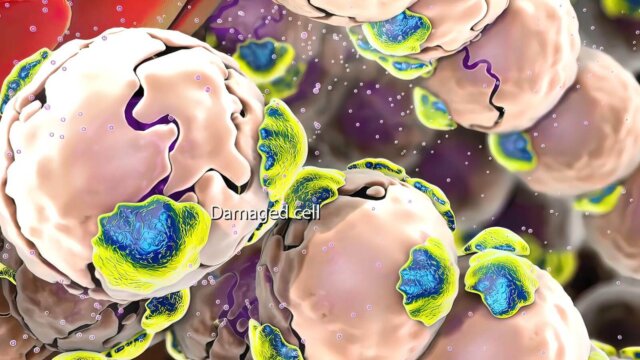FTC disclaimer: This post may contains affiliate links and we will be compensated if you click on a link and make a purchase.
Asthma is a chronic disease characterized by airway inflammation, wheezing, coughing, chest tightness, shortness of breath, and difficulty breathing.
The condition affects nearly 300 million people worldwide. Asthma attacks usually occur at night or early morning and worsen during exercise or cold weather.
There are two types of asthma: allergic and non-allergic. Allergic asthma occurs when the immune system mistakenly identifies harmless substances (called allergens) as harmful invaders.
These substances cause the body to release chemicals called histamines, which trigger the production of mucus and other inflammatory cells.
Nonallergic asthma occurs when the lungs become inflamed due to an injury or infection.
Let’s look into the details of Asthma and its types, causes, symptoms, risk factors, diagnosis, and treatment.
What is Asthma? Explained
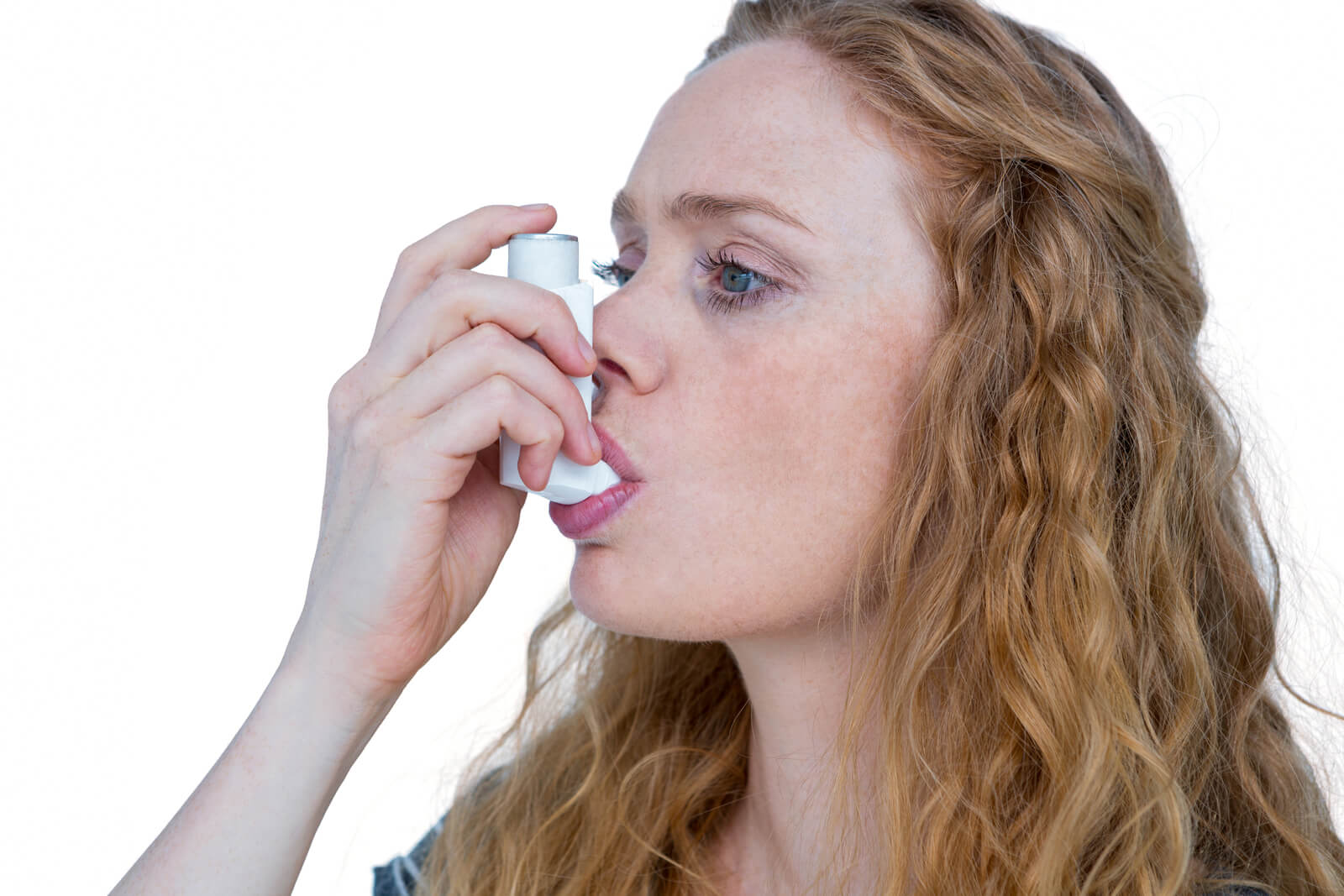
Asthma is a chronic disease affecting bronchial tubes or airways, which carry air to and from the lungs. Often referred to as bronchial hyperactivity (BHR), asthma does not affect the lung tissue or air sacs.
The inside walls of an asthmatic’s bronchial tubes become inflamed and hypersensitive to external allergens. The bronchial tubes narrow, thus restricting the airflow amount.
Those who suffer from asthma can control the disease but can never cure it. The cause is unknown to this day, but many doctors have noted a strong link between asthma and atopy, the hereditary presence of antibodies associated with allergic reactions.
When does Asthma occur?
Asthma most often appears in early childhood. Adult-onset asthma is often seen in middle-aged women due to a non-allergic respiratory tract infection.
The factors that trigger asthma symptoms are varied and differ from individual to individual.
Common triggers include environmental variables (weather, pollen, cockroach droppings); occupational irritants (vapors, fumes, gases); certain medications (beta-blockers, aspirin, ibuprofen); and emotional factors (stress, anxiety, depression).
Asthma can also occur after physical activities in cold, dry weather conditions. This type of asthma is referred to as exercise-induced asthma. While none of these factors cause asthma, each adds fuel to the flaming bronchial tubes.
Asthma History
People have speculated about asthma for thousands of years. “asthma” was derived from the Greek word “aazein,” meaning to exhale with an open mouth or to pant.
The term appeared in The Iliad denoting a short-drawn breath and was included in a medical text written by Hippocrates around 400 B.C.
Ancient Greeks thought asthma was caused by internal imbalances and could be cured by inhaling the fumes from an herb mixture that was heated on a brick.
Moses Maimonides, a 12th-century rabbi, philosopher, and physician, also had a simple cure for asthma symptoms – chicken soup.
Over the years, medical professionals and scientists have learned that slurping a bowl of hot soup is not enough; asthma is a serious disease that must be monitored by the careful notation of signs and symptoms, controlled by medicine administered through asthma inhalers and managed by eradicating allergens with a HEPA vacuum cleaner.
What is Asthma Attack? Explained
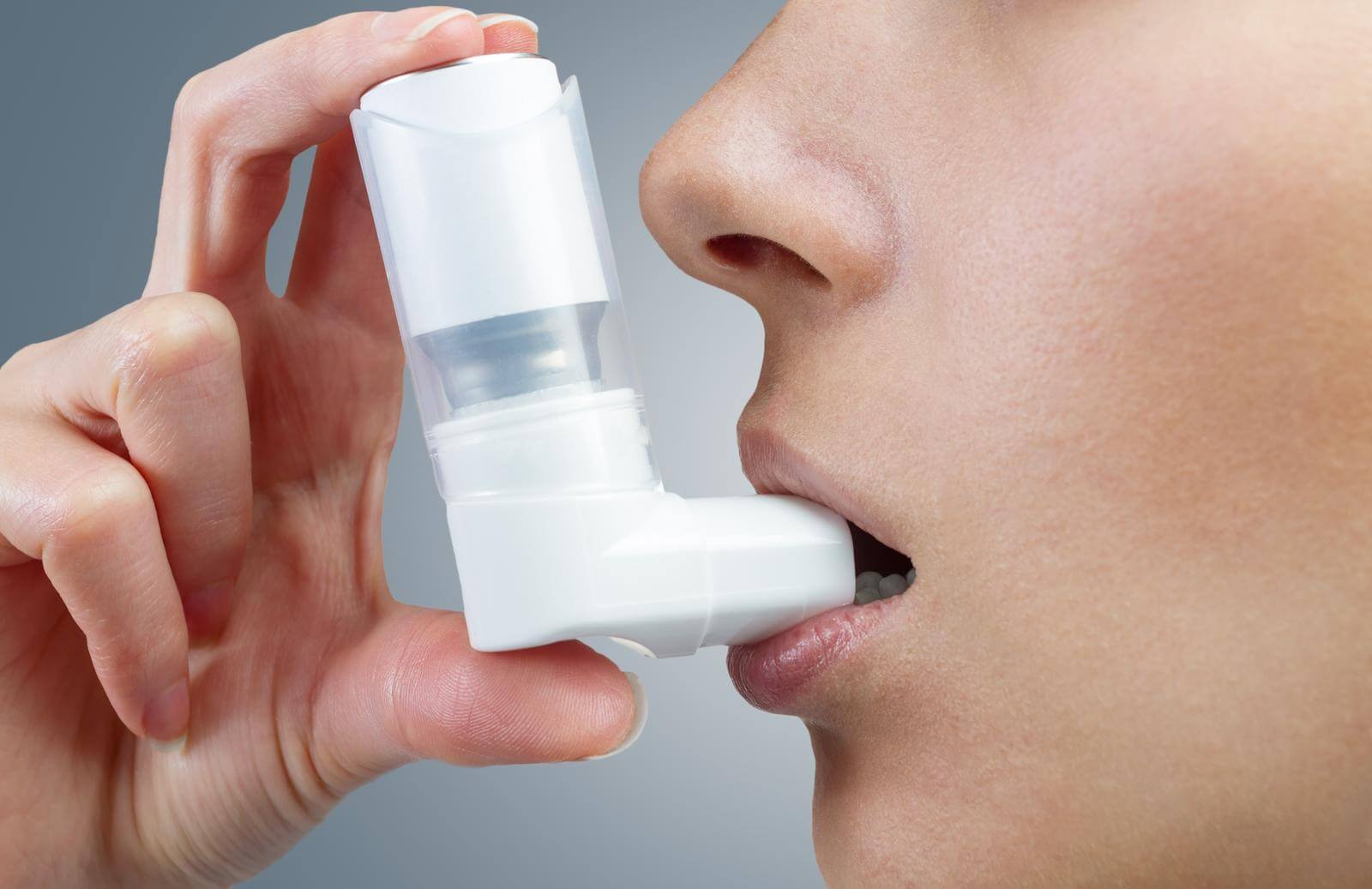
Many people diagnosed with asthma are not sure what an asthma attack is and what happens during one.
You must understand what an attack is and what could happen if you do not have the proper medication to deal with your asthma.
What happens in an asthma attack?
When you have an Asthma attack, the muscles surrounding your airways will constrict, and the inflammation or swelling will start to close off your airways.
As your airways close, this will prevent air from flowing to and from your lungs. The cells that produce mucus will start to make more mucus very quickly, and you will find that it is this mucus that begins to block your airways and make it harder for you to function and breathe.
If you are having an asthma attack, your airways close up as they restrict the oxygen going to your vital organs.
This will make it very difficult for you to breathe and do the things in life that you enjoy doing. You must always ensure you never let your asthma get this far out of control.
Many people die from severe asthma attacks, it is very serious, and you must be very careful.
If you have a severe asthma attack, you will need your emergency rescue inhaler to treat your airways to open back up again and get some relief.
As a safety precaution, you should check in with your doctor after a bad asthma attack to ensure everything is okay.
When suffering from a severe asthma attack, the doctor will usually prescribe you an oral steroid such as Prednisone for a couple of days to help you recover and prevent another attack.
What are the necessary steps to follow for Asthma Attack?
The most important thing you can do is make sure that you always have your rescue inhaler with you at all times, where ever you go.
You must take all the necessary steps to protect yourself from asthma attacks. If you do find you are potentially having a severe attack, make sure you seek medical attention at once.
The faster you get professional medical help, the faster the doctor can administer medications and oxygen to help you recover as quickly as possible and have you breathing normally once again.
The second most important thing you must do is to let everybody around you know that you have asthma.
Tell everyone whom you are in contact with regularly, such as coworkers, family, and friends.
This will help them understand what is going on, and they can take the necessary steps and provide assistance with anything they might need to get through an asthma attack.
Their role may be to talk to you while you recover or call 911 if they believe it is an emergency.
Most Common Types of Asthma
There are several different ways of categorizing asthma. There is no rigid rule about it; these asthma types are often ad-hoc classifications that developed over the course of years.
Some classifications are based on the age at first onset; others depend on the factor that triggers symptoms, and still others on where the patient is when the symptoms appear.
Let’s look at a few key asthma types. The first two are based on the initial age at which asthma symptoms appear.
Extrinsic or allergic asthma
About 80 percent of children with asthma, and more than half of adult sufferers, have allergic asthma, meaning their asthma is caused by contact with a substance in their environment.
No one doubts that the hypersensitivity causing the muscles of the little bronchioles to constrict (and the tubes to become inflamed and filled with mucus) has to do with allergies.
The conventional view maintains that the main culprits are grass pollen and the house-dust mite, Dermatophagoides pteronyssinus.
This little creature is prevalent in homes today because of fitted carpets, heat, and insulation. This type of asthma is also believed to be genetic. One-third of patients have a relative who has suffered from asthma.
Intrinsic or non-allergic asthma
This represents about 10 percent of cases and usually develops after 30. This form of asthma is not typically associated with allergies.
The condition tends to affect women, and many cases seem to follow a respiratory tract infection. The condition can be difficult to treat, and symptoms are often chronic and last all year round.
Child-onset asthma
Most cases, asthma begins during childhood or adolescence, the most common type.
Asthma appears in a child when the child is hypersensitive to specific allergens in the environment. This excess sensitivity is generally due to genetic factors.
Substances that trigger allergic responses include pet dander, cockroach parts, dust mites, pollen, etc. Other factors like breathing in cold air can also cause allergic reactions.
The allergic response involves the production of antibodies to trap the foreign substance, which in turn makes the cells in the airway extra sensitive to allergens.
When the child continues to be exposed to the substance/s, asthma symptoms develop, and he may have a mild or severe asthma attack.
As with most other asthma types, having a family history of asthma or allergies can predispose a child to become asthmatic.
Adult-onset asthma
Asthma may also start during adulthood, although this is less common than child-onset asthma.
Asthma can start off at any age, even well into adulthood. Asthma starting during adulthood seems to affect women more than men. This is unlike child-onset asthma, which affects more boys than girls.
Some adults do not have allergic responses but still have asthma symptoms. This can happen when they have conditions like nasal polyps or sinusitis. There are also cases of asthma triggered off by drugs like aspirin.
Adults may also develop asthma from exposure to plastics, metals, wood dust, and other environmental / work-related substances.
Exercise-induced asthma
This is a common asthma type. In this disease variant, asthma symptoms occur either during or after physical exertion.
Some people never develop asthma symptoms at any other time – they are not allergic to any substance. Their symptoms develop only after exercise.
This type of asthma is often not recognized as asthma. Instead, poor physical health or heart-related issues are blamed for the symptoms.
If the person is in good health, asthma should be considered a possible cause of breathlessness and other symptoms after exercise.
Any activity or sport that calls for continuous movement – particularly in cold air conditions – is more likely to act as a trigger for exercise-induced asthma.
Cough-variant asthma
Sometimes, the only asthma symptom present may be coughing.
It is difficult to identify asthma as the underlying cause because many other health conditions can bring about coughs. Coughing can occur at any time of the day or night.
However, in some patients, coughing occurs mostly at night. This can lead to disturbed sleep and other health issues from lack of sleep.
Occupational asthma
A wide variety of substances can trigger asthma. Many of these substances occur in the workplace rather than in the home.
Asthma set off at the workplace due to one or more factors is called occupational asthma. Possible triggers for such asthma include dust from a factory, chemicals of various kinds, industrial gases/vapors, industrial smoke, etc.
Other triggers may include pollen, molds, animal dander, etc., which are also common in homes. Occupational asthma attacks may start sometime after the person arrives and often subsides when he leaves the workplace.
While there can be many variations of the disease, the above are some of the most common asthma types.
Nocturnal Asthma
Nocturnal asthma is a type of asthma that is characterized by symptoms that are worse at night. It is a common form of asthma and can be difficult to manage.
Several things can trigger nocturnal asthma, including allergies, cold air, and exercise. The best way to manage nocturnal asthma is to identify and avoid the triggers.
Some medications can help to control the symptoms.
Medication Induced Asthma
If you have asthma, you know how important it is to avoid triggers that can cause an asthma attack. But did you know that some medications can trigger an asthma attack?
Medication-induced asthma is a type of asthma that is caused by taking certain medications. These medications include over-the-counter drugs like ibuprofen and aspirin and prescription drugs like beta blockers and ACE inhibitors.
Symptoms of medication-induced asthma are the same as those of other types of asthma and can include shortness of breath, wheezing, and chest tightness.
If you think you may have medication-induced asthma, talk to your doctor about alternative treatments.
Asthma Causes and Other Factors
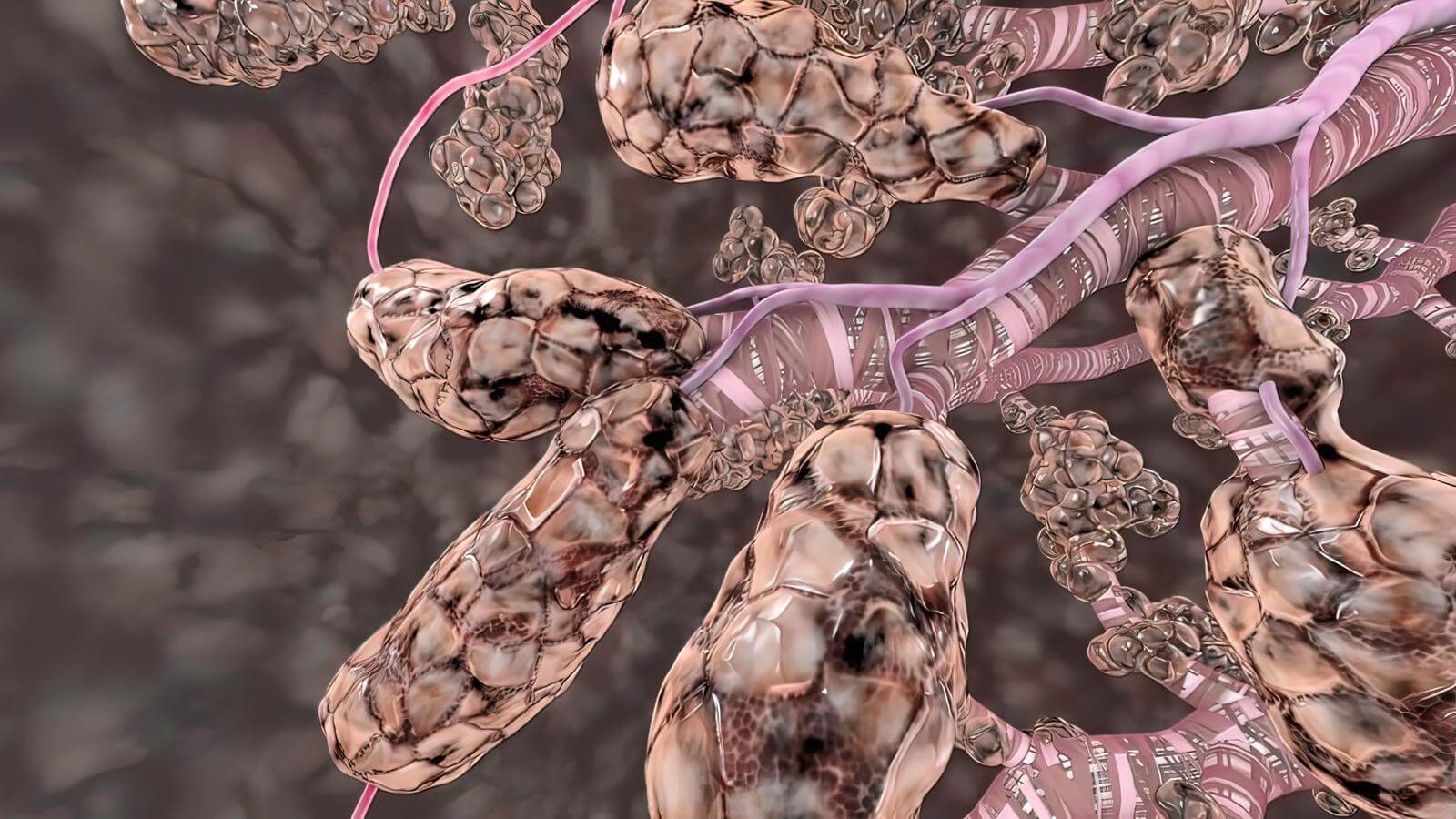
Although clear patterns exist, the specific causes of asthma are far from straightforward. Research has established that the causes cannot simply be divided into allergic and non-allergic.
Allergic asthma is triggered by allergens: substances capable of stimulating the body’s immune system into bringing about an allergic reaction.
Many other factors also come into play. These can be as diverse as emotional upsets, environmental stress, and exercise. Exercise-induced asthma can be particularly severe if exertion occurs in cold, dry conditions.
Common Causes of Asthma
The causes of asthma are wide-ranging. Some causes, however, are more commonplace than others.
At the top of the list are specific allergens. People suffering from specific allergy-induced asthma are usually very aware of the offending allergen and try to avoid it.
Pollutants, dust, smoke, irritants, chemicals, viral infections, bacteria, stress, emotion, and exercise are other frequently diagnosed causes.
Asthma Facts
- Allergies cause approximately ninety percent of the cases of asthma in children under the age of sixteen.
- The causes in approximately seventy percent of sufferers under age 30 are allergy related.
- Approximately eleven percent of the non-asthmatic population experiences exercise-induced asthma. Many of these people have allergies or a family history of allergies.
- In the elderly, the condition can be missed easily, commonly blamed on a heart condition or another lung disease like bronchitis or emphysema.
Is Asthma Genetic?
Research has uncovered several areas of the genome that may be associated with the inheritance and development of asthma.
Recent data published in the journal Science characterizes a novel receptor, GPRA (which stands for G protein-coupled receptor for asthma susceptibility), which is thought to play a role in the inflammation observed in some forms of allergy and asthma.
The discovery is important not only for providing insight into potential causes of the disease but also for developing new treatment strategies.
So, is asthma hereditary? Not in itself, but the tendency or predisposition to develop the condition can be.
It is believed that genetic susceptibility, combined with environmental factors, is what leads to asthma.
Expert opinions regarding the degree to which the condition is hereditary vary widely.
One fact that all experts agree upon, though, is that the likelihood of becoming asthmatic increases significantly if one or both parents already suffer from the condition.
Asthma in Children and Passive Smoking
Research has concluded that maternal smoking can seriously impair infant lung function, even before the child is born.
Experts agree that inhaled cigarette smoke increases the tendency of the respiratory tract to react to other asthma triggers. Babies and younger children are particularly vulnerable.
Asthma in Children: The Hereditary Link
In All About Asthma and How To Live With It, Dr. Glennon Paul concludes that if neither parent suffers from asthma, the chance of their offspring becoming asthmatic is as low as 10 percent.
The likelihood increases to 25 percent when one parent is asthmatic and 50 percent when both parents are.
What triggers Asthma?

The word asthma triggers usually refer to things or factors that can cause an asthma attack in patients suffering from asthma.
Several factors can act as asthma triggers. The presence of dogs and cats can act as an asthma trigger, as some people are allergic to animal hair.
Other asthma triggers include exposure to tobacco, smoke, and cold air. Sudden emotional and psychological stress or anxiety can also act as asthma triggers in certain patients.
Certain subjects get an asthma attack if they consume aspirin or other painkillers. Workplaces such as construction sites, fine chemical industries, and mines act as asthma triggers, thanks to the polluted air in these places.
Common Asthma Triggers (Due to allergens)
The most common asthma triggers are allergens. Some of the allergens are listed below:
- Animals dander from animals’ skin, hair, or feathers, such as cats, dogs, etc.
- Dust mites (contained in house dust)
- Cockroaches
- Pollen from trees and grass
- Mold (indoor and outdoor)
- Cigarette smoke
Common Asthma Trigger (Due to irritants)
The other category of asthma triggers includes irritants. Some of the common irritants are enlisted as follows:
- Air pollution
- Changes in weather
- Cold air, for example, if you move from warm indoor air to cold air outdoors.
- Strong odors from painting or cooking
- Scented products heart
- You may be exposed to irritates or allergens at work, such as special chemicals or dust.
- The third category of asthma triggers includes various miscellaneous factors.
- Exposure to Histamine or methacholine aerosols.
- Consumption of certain drugs such as beta-blockers used to treat high blood pressure or heart disease has been reported as asthma triggers.
- Medications such as aspirin and other painkillers.
- Preservatives such as SO2 are used in soft drinks and wine.
- Indigestion leads to gastroesophageal reflux, which is known as acid reflux. This leads to heartburn and acts as a trigger for an asthmatic attack, especially at night.
- Sodium meta-bisulfite is one of the most common preservatives in salad dressings, processed meat, beer, and wine. It is found to trigger an asthmatic attack.
- Respiratory and viral infections such as cold, flu, and sinusitis act as asthma triggers.
- Sudden extreme temperature changes such as thunderstorms, high humidity, and freezing temperatures act as asthma triggers.
- Certain strenuous, physically challenging activities such as running and extreme exercises can trigger asthma.
- Some patients are allergic to certain foods such as fish, eggs, peanuts, cow’s milk, and soy. Consumption of these foods triggers an asthma attack in these patients.
- Certain hormonal changes during women’s menstrual cycle also act as asthma triggers.
- Exposure to NO2 through indoor burning appliances such as gas stoves, fireplaces, and wood stoves can also lead to an asthmatic attack.
- Exposure to cigarette smoke, even second-hand or passive smoking, can lead to an asthmatic attack. Parents of children suffering from asthma must remember that they do not smoke in their presence, thereby subjecting them to passive smoking. Thus, passive smoking is also considered an asthma trigger.
Signs and Symptoms of Asthma
Not everyone experiences asthma the same way, and the symptoms can vary between asthma sufferers. They can vary in severity from person to person.
Some people may experience only minor symptoms and extremely infrequent asthma attacks. Between flare-ups of symptoms, your breathing may be completely normal with no difficulty or trouble.
Some patients suffer symptoms only during the nighttime, while others will only experience symptoms when directly exposed to triggers and irritants.
Moreover, some people suffer symptoms, regardless of time or environmental conditions.
Early signs of asthma start to show around six years old and can usually be seen during times of activity or exercise. In other cases, asthma signs don’t show until adult age.
Asthma Symptoms
Normal Asthma Symptoms
Symptoms of asthma are experienced when a person’s air passages constrict, are inflamed, or are filled with mucus.
- Shortness of breath
- Tightness in the chest
- Wheezing and whistling sound when exhaling
- Episodes of coughing and wheezing that are made worse by respiratory conditions like the flu or a cold
Severe Asthma Symptoms
Severe asthma symptoms include:
- More frequent and exacerbated symptoms listed above
- Having increased difficulty breathing (as measured on a peak-flow meter, which checks the functionality of your lungs)
- Increasing and more frequent use of a quick-relief inhaler
- Asthma attacks
Asthma Symptoms (Due to change in environmental factors)
Some symptoms are directly the result of a change in environmental factors. People experience flare-ups in certain kinds of situations.
Allergy-asthma
For example, allergens, such as pollen, pet dander, mold, and dust, can cause people sensitive to those irritants to experience asthma symptoms.
This is a very common type of asthma, and most people with asthma suffer from some kind of allergy problem.
Exercise-asthma.
People suffer asthma symptoms during increased physical activity. This kind of asthma can be particularly debilitating when the air is cold and dry.
However, people with exercise-asthma should not avoid exercise altogether and work out an exercise plan and treatment plan with their doctor.
Occupational-asthma.
Asthma symptoms are triggered by gases, chemicals, dust, or other irritants commonly found in workplaces.
In some reported cases, this is the direct cause of all asthma symptoms experienced by the patient.
Asthma Attacks Symptoms
An asthma attack is when you experience a severe worsening of your regular asthma symptoms due to muscles getting tighter in your air passages.
Your airway linings become inflamed and swollen; excess mucus is produced and fills passages.
All these factors cause problems such as wheezing, trouble breathing, coughing, tightening in the chest, and shortness of breath that can impact your ability to carry out normal daily activities.
Other asthma attack symptoms include:
- Severe wheezing when inhaling and exhaling
- Extremely rapid breathing
- Persistent coughing that won’t stop
- Pain or pressure in the chest
- Blue lips or fingernails
- Feelings of panic or anxiety
- Tightening of the muscles in the neck and chest
- Difficulty speaking
Asthma attacks may happen suddenly without warning or any expectations.
Often they are a reaction to stimulants and environmental factors such as allergies or exercise, but they can also occur for no apparent reason.
They often result from a respiratory condition like a cold or the flu that exacerbates your asthma symptoms and triggers an asthma attack. Knowing the symptoms of an asthma attack can help make the difference between life or death during an emergency.
Most symptoms are easy to recognize, like coughing and wheezing, but many people don’t realize there are other symptoms involved, like feelings of panic and anxiety.
Many patients report feeling itchiness before an asthma attack, particularly on their face and chin.
Diagnosis of Asthma

Asthma is a chronic disease of the respiratory system characterized by symptoms such as coughing, wheezing, shortness of breath, and chest tightness.
It is caused by inflammation of the airways in the lungs. An asthma diagnosis is essential to determine the type of asthma you are suffering from.
This helps the doctor prescribe the proper medication dosage and devise an asthma action plan specific to your symptoms and conditions.
Test for Asthma Diagnosis
Asthma diagnosis involves three important steps.
The doctor does a thorough physical examination of the patient and notes the patient’s medical history. Then, he asks the patient to undergo the following tests to diagnose asthma:
Lung function test
Spirometry is a test used to determine how efficiently your lungs are functioning. This test determines how fast the patient can breathe in and out.
It also measures the speed at which you can blow air out of your lungs. The doctor may prescribe you medicines and again subject you to the same test to determine how effectively you respond to asthma medicines.
Peak expiratory flow
A peak flow meter is a portable device. It consists of a small tube with a gauge that measures the maximum force a person can exert to blow air through the tube.
For about two weeks, the patient must perform the peak flow meter test twice daily. After waking up in the morning, the patient has to perform the peak flow meter test before taking the bronchodilator medications.
The patient should perform the second test in the afternoon or early evening after taking the bronchodilator medicines.
Peak flows vary during the day. The variability greater than 20% suggests a reversible airway obstruction implying that the person could suffer from asthma.
Bronchial Provocation
Sometimes, a patient with asthma may show normal results with spirometry and peak flow monitoring.
In this case, the diagnosis of airway obstruction is made by subjecting the patient to bronchial provocation.
This test identifies and characterizes hyperactive airways by exposing the patient to an increasing amount of an aerosolized chemical that triggers a hyper-responsive reaction.
The chemical that is most commonly used in this case is methacholine.
Allergy testing
This test is used to determine if you suffer from asthma due to exposure to allergens.
Tests are also carried out to determine if you suffer from diseases such as reflux disease, vocal chord dysfunction, and sleep apnea. This is because these diseases have symptoms similar to asthma.
Chest X-ray or electrocardiogram
This is conducted to determine if any foreign substance or other disease is causing asthma symptoms.
Physical examination
This is done to determine the prevalence of asthma symptoms in patients, such as wheezing, runny nose, swollen nasal passages, and allergic diseases, such as eczema.
Asthma diagnosis in young children has found that children who suffer from wheezing and frequent infections generally have asthma in the following cases:
- They have a sibling or a parent in the family who is an asthma patient
- The child suffers from allergic skin conditions such as eczema
- The child is allergic to pollen, dust mites, and other allergens
- The child wheezes even if he or she is not having a cold or flu.
Treatment and Management of Asthma

Because there is no cure for asthma, long-term treatment and preventing symptoms are key to handling your asthma.
The best treatments for asthma involve acts of prevention- such as learning to recognize what the triggers of your asthma symptoms are and taking steps to avoid those actively.
Also, keeping track of your breathing and monitoring the effectiveness of your treatments and medications will help you keep your symptoms under control and prevent an asthma attack from taking you by surprise.
When you experience flare-ups of symptoms, you can use acute quick-relief treatments such as an inhaler with albuterol.
Medication Delivery Methods
Methods for administering asthma medications can be divided into three broad categories:
- Oral: swallowed pills and liquids
- Inhalation: via mouth or nose
- Injection: into muscle or vein.
Available Asthma Treatments
Forms of medication and treatment vary according to the nature and severity of the attack. Certain treatments, however, are typical.
Mild asthma attacks: Short-acting inhaled bronchodilators relieve symptoms.
Moderate to severe asthma attacks: A combination of bronchodilators and anti-inflammatory drugs reduces constriction and inflammation of the airways.
Acute asthma attacks: A combination of bronchodilators, such as theophylline and intravenous adrenalin (epinephrine), are used. The use of inhaled steroids (as opposed to oral steroids) is preferred.
Specific allergy-induced asthma attacks: Anti-allergic medication usually administered by injection desensitizes the asthmatic to the allergen.
How Asthma Treatments Work
Each of the asthma medications or treatments has a specific mode of action.
- Bronchodilators relax the muscles surrounding the airways.
- Anti-inflammatory agents (steroids or corticosteroids) reduce the swelling and irritation in the airways.
- Preventive asthma products, such as cromolyn sodium, control and prevent the onset of an asthma attack.
- Adrenaline (epinephrine) is used in emergency situations to relax the muscles surrounding the airways rapidly.
Asthma Treatment: Medications

Choosing the right medication is a decision between you and your doctor, and it can depend on factors such as your age, the type and severity of your symptoms, and what your triggers are.
During an asthma attack, the airways become irritated and react by narrowing and constructing, causing increased resistance to airflow, and obstructing the flow of the air passages to and from the lungs.
Understanding Types of Asthma Medicines
There are two main types of medicines for the treatment of asthma:
Quick Relief Medicines: also called relievers, give rapid, short-term treatment and are taken when you have worsening asthma symptoms that can lead to asthma episodes or attacks. You will feel the effects of these medicines within minutes.
Long-Term Control Medicines: also called preventers, are taken every day, usually over long periods of time, to control chronic symptoms and to prevent asthma episodes or attacks.
You will feel the full effects of these medicines after taking them for a few weeks. People with persistent asthma need long-term control medicines.
Drugs, such as those resembling two of our hormones, can help treat asthma. These hormones are adrenaline (epinephrine in the USA) and hydrocortisone (a steroid).
Other drugs help treat asthma. Whilst drugs can remove all your symptoms if you have mild asthma, people with more severe or long-standing asthma don’t get such good results, so alternate medications are required.
Adrenaline (epinephrine) is pumped into our bloodstream when we have a sudden fright or emergency. It is the quick-acting hormone from the middle of the adrenal glands near our kidneys.
It makes your pulse race, your heart thump, and readies your body for emergency action. In asthma, the medicines which resemble adrenaline quickly relieve asthma for a short time and are called relievers.
Hydrocortisone comes from the outer part of our adrenal glands, called the ‘cortex.’ It is also partly an “emergency hormone,” but it works much more slowly, for much longer, and is completely different from adrenaline.
Medicines resembling hydrocortisone slowly allow air tubes lining an asthma sufferer to become normal. As a result, your asthma becomes less severe, and you are less likely to get asthma attacks.
So these steroid medicines are called preventers. There are other asthma ‘preventers,’ but steroids are the most powerful.
Most people with asthma should have these kinds of medicine – preventers, and relievers.
Usually, the best way to take these medicines is to breathe them in. That is, you inhale them through your nose or mouth. The reasons you inhale them are :
- Because you need less of the medicine,
- You won’t suffer as many side effects, and,
- The medicine works more quickly,
The final point is particularly important with the adrenaline-like, fast-acting relievers.
Another advantage is that the hydrocortisone-like steroid preventers you breathe in can be chosen to be biodegradable inside the body.
As a result, they can do their work in the lung but don’t get much chance to produce any side effects in the rest of your body because your liver breaks them down.
Importance of long-term medications for Asthma
Long-term medications are the main treatment for asthma and the key to controlling it and preventing an asthma attack.
You should use your fast-relief medications occasionally when you have a flaring-up problem.
If you use your inhaler at a rate more often than your doctor recommended, then there might be a problem with your long-term medications, and you will probably need to adjust your treatment regimen.
Keep track of how often you use your fast-relief meds (inhalers), and let your doctor know how often you use them. Keeping your asthma symptoms managed is the foundation of asthma treatment.
Understanding types of long-term control medications for Asthma
Long-term control medications are taken every day, even when you’re feeling well, to help prevent asthma symptoms. These medications can be inhaled (breathed in) or taken in pill form.
Most people with asthma need both long-term control and quick-relief medication. Your doctor will work with you to develop a treatment plan that’s right for you.
Inhaled steroids are the most common type of long-term control medication. They’re very effective at preventing and reducing asthma symptoms. Inhaled steroids are usually taken once or twice a day.
Oral steroids are another type of long-term control medication. They’re not as commonly used as inhaled steroids but can be just as effective. Oral steroids are usually taken once or twice a day.
Leukotriene modifiers are a newer type of long-term control medication. They work by blocking leukotrienes, chemicals that can trigger asthma symptoms. Leukotriene modifiers are taken once or twice a day.
Theophylline is a long-term control medication that’s been used for many years. It works by relaxing smooth muscles in the airways, making breathing easier. Theophylline is usually taken once or twice a day.
Understanding types of quick-relief medications for Asthma
Quick-relief medications are taken only when you’re having asthma symptoms. These medications are inhaled and work quickly to open your airways and make breathing easier.
Short-acting beta-agonists are the most common type of quick-relief medication. They work by quickly opening up the airways to make breathing easier. Short-acting beta-agonists are inhaled and are usually taken as needed.
Oral and intravenous corticosteroids are another type of quick-relief medication. They’re not as commonly used as short-acting beta-agonists, but they can be just as effective. Corticosteroids are usually taken as needed.
If you have asthma, it’s important to work with your doctor to develop a treatment plan that’s right for you. Many effective medications can help you manage your asthma and live a normal, active life.
Asthma Treatment: Albuterol Inhaler (Instant Relief for Asthmatics)
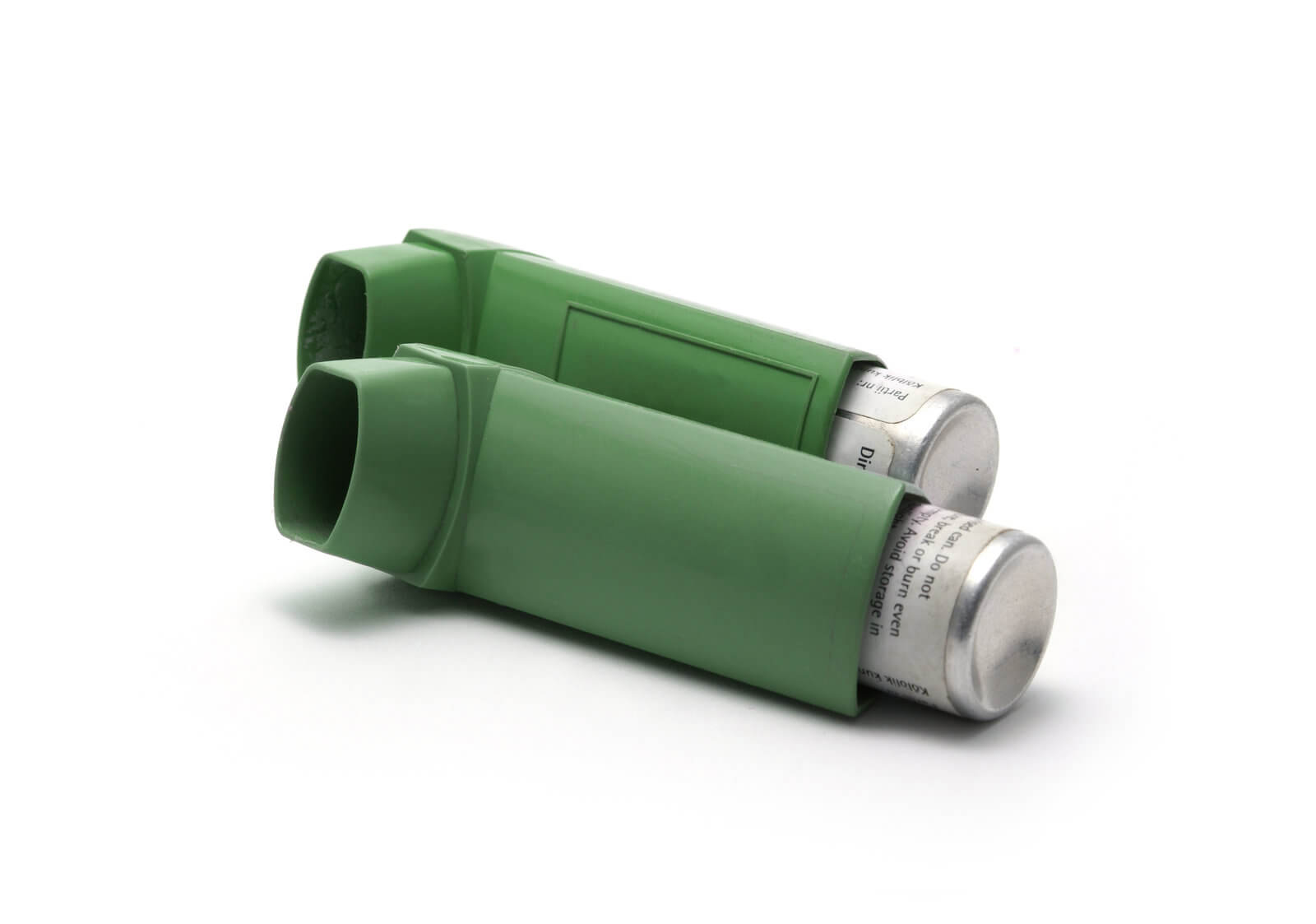
The albuterol inhaler has revolutionized asthma treatment. The albuterol inhaler (often referred to as a metered dose inhaler or simply MDI) has revolutionized asthma treatment.
The other good news is that in the vast majority of cases, an inhaler is all that’s required of both child and adult asthma sufferers to control their condition.
Albuterol is an inhaled bronchodilator that relaxes the muscles in the respiratory tract and dilates the airways to improve breathing.
The albuterol might be mixed with cromolyn to prevent the onset of another attack.
Prescribed usage might be one or two sprays every four to six hours, depending on the severity of the condition and the attacks.
Some patients with very mild asthma only need to inhale medication now and then, just when they feel they need it.
How to use your inhaler for maximum effect:
- Shake the canister thoroughly to ensure even dispersal of the drug in the propellant.
- Hold the canister upright. This is important! If you don’t do this properly, the internal metering chamber won’t fill the next dose correctly.
- Hold the inhaler 1-2 inches away from your open mouth.
- Activate the inhaler.
- Breathe in steadily and slowly.
- Continue to inhale fully after the spray of asthma medicine has been delivered.
- Hold your breath for a count of 5-10 seconds.
- If you need two sprays, do not deliver both during the same inhalation.
Albuterol Inhaler vs. Oral Medications
Compared with taking medicine for the condition by mouth, the albuterol inhaler wins hands down!
The reason? The drugs must pass through the stomach into the small intestine when swallowing tablets or syrup. This can take up to an hour.
The drugs must then be absorbed into the blood vessels and carried (in diluted form) to the lungs. The albuterol inhaler short-circuits this drawn-out process. It goes directly to its target: the lungs.
Asthma Treatment: Nebulizers
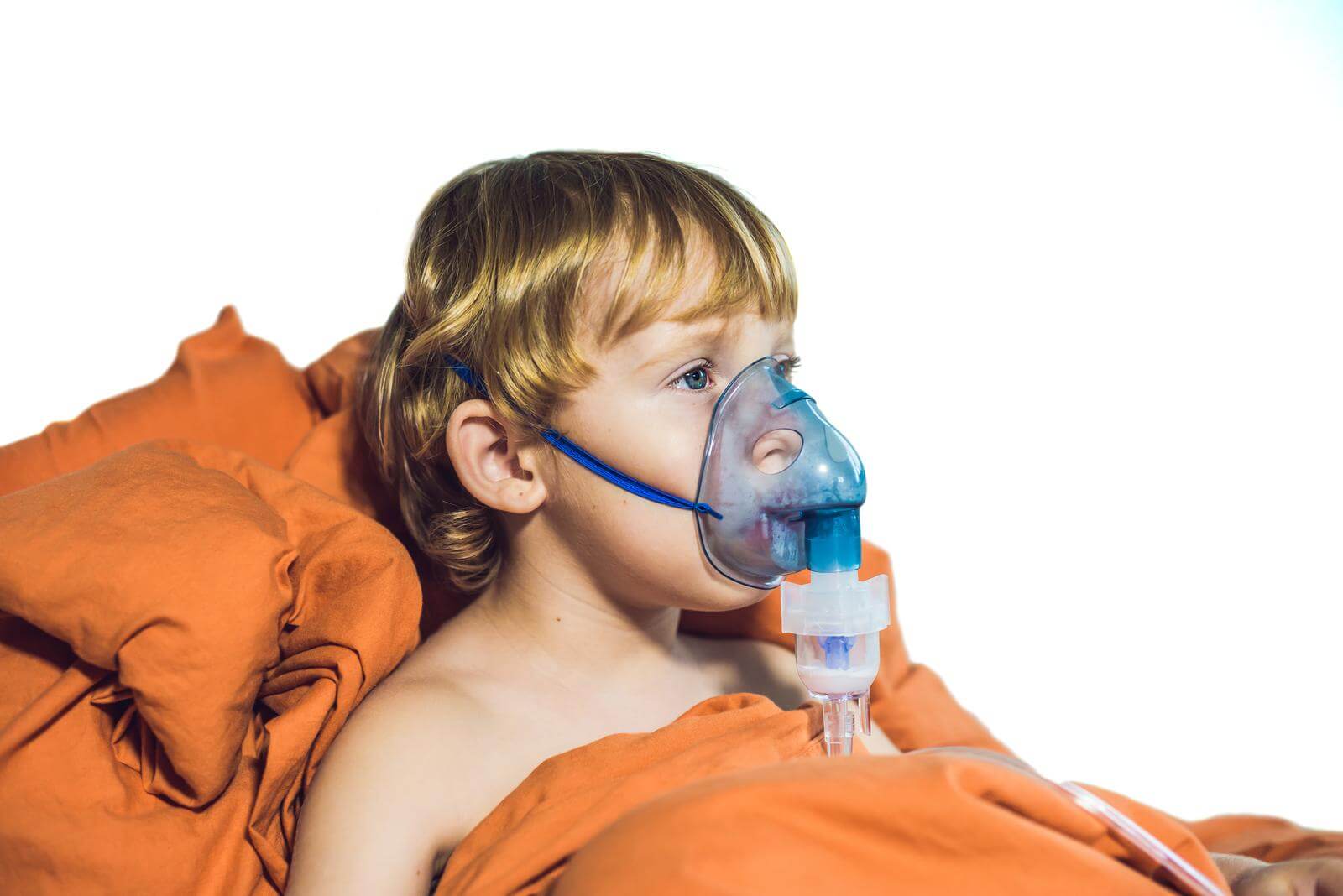
A nebulizer is a device that converts liquid asthma medicine into a cloud of tiny aerosol particles. A compressed air machine drives the device.
It comprises a cup, a mouthpiece (usually attached to a mask), and thin plastic tubing that connects the mouthpiece to the compressed air machine.
Nebulizers have one big advantage over ordinary inhalers: they can deliver the drugs to the airways and control an asthma attack, even when the movement of breath in and out of the lungs is severely reduced.
Used extensively in hospitals, nebulizers are particularly effective for the treatment of three categories of patients:
- Infants and children under the age of five years
- Adults and children who, for whatever reason, are unable to use a normal albuterol inhaler
- Any age group suffering from a severe attack.
Asthma Treatment: Natural Cure for Asthma
As mentioned earlier, preventing your asthma from flaring up is one of the most important things you can do for the best treatment of asthma.
Try to observe and track what kind of things induce your symptoms. Is it an allergy? Is it something you can avoid?
Identifying and avoiding triggers is one of the best ways to control your asthma. Common asthma triggers include dust, pollen, mold, smoke, and pet dander. Once you know what triggers your asthma, you can take steps to avoid them.
Many people can severely reduce their symptoms by adjusting their home and work environment to cut out asthma triggers. Talk to your doctor about ways to track your triggers and cut them out of your life.
In addition to avoiding your triggers, many natural treatments can help you control your asthma. These include:
1. Herbs and supplements
Many herbs and supplements are effective in treating asthma. These include ginger, turmeric, garlic, and omega-3 fatty acids.
2. Acupuncture
Acupuncture is a traditional Chinese medicine technique that involves inserting thin needles into specific points on the body. This can help to relieve asthma symptoms by reducing inflammation and improving lung function.
3. Biofeedback
Biofeedback is a technique that uses feedback from your body to help you learn to control your asthma.
This can be done through devices that measure your breathing or heart rate or by using techniques like meditation and relaxation.
4. Chiropractic
Chiropractic is a type of alternative medicine that focuses on the relationship between the body’s structure and function.
Chiropractic care can help to improve asthma symptoms by reducing inflammation and improving lung function.
5. Exercise
Exercise is a great way to control your asthma. It helps to improve your lung function and reduce inflammation.
6. Relaxation
Relaxation techniques, such as yoga and meditation, can help you to control your asthma by reducing stress and anxiety.
7. Healthy diet
Eating a healthy diet is an important part of managing your asthma. Foods high in antioxidants, such as fruits and vegetables, can help reduce inflammation.
8. Stress management
Stress can trigger asthma attacks. Learning to manage your stress can help you to control your asthma.
9. Sleep
Getting enough sleep is important for asthma control. A good night’s sleep can help to reduce inflammation and improve lung function.
10. Homeopathy
Homeopathy is an alternative medicine that uses diluted substances to treat diseases. Homeopathic remedies for asthma can help to reduce symptoms and improve lung function.
These are some of the best options if you’re looking for natural ways to treat your asthma. Talk to your doctor about which treatments are right for you.
Asthma Prevention
Asthmatics can rest assured that a treatment suitable to their condition is usually available. Asthmatics have a wide range of products that can effectively control their symptoms, often within seconds.
Advances in the range of asthma treatments are certainly encouraging.
However, most asthmatics prefer to avoid a lifetime of dependence upon medication. It makes sense; therefore, preventing triggers should be the first line of defense.
Knowledge of how to prevent or avoid asthma triggers is vital. If you are asthmatic, you should know:
- The degree of severity of your attacks and whether they’re stabilizing or deteriorating
- If your prescribed medication is the most appropriate for your needs
- If there are any changes in your condition might benefit from a different type of treatment.
Asthma Control: Controlling your Asthma
If you have been diagnosed with asthma, you must be sure that you are taking the proper steps to keep yourself healthy and safe.
Keep yourself fully educated.
You must be fully educated on controlling your asthma to help you live a normal life.
By learning and following the right steps, you can accomplish this goal, and it will become part of your routine; you will begin to notice that most asthma cannot control your life unless you fail to take control of it first.
Regular checkups
Always be sure you see your doctor for regular checkups. Bring a list with you of your triggers, and also add any concerns, symptoms, or health problems that you may want to discuss with your healthcare provider to help control your asthma.
The goal is to ensure you are getting the help you need when you need it. If your doctor has prescribed you a medication you must inhale, ensure you are using it properly.
Ask your doctor to show you how to do this, as it can help you recover from an attack. Many asthma patients do not know how to use their inhalers properly!
Let’s doctor know of any other symptoms.
If you find yourself having other symptoms besides difficulty breathing, like headaches, irritated eyes, or anything else you have concerns about, you will want to let your doctor know right away so he can prescribe you some medication that will help you with your symptoms.
Always keep a list of your medications with you and tell your doctor if there are any other medications you are taking that he is unaware of so that you will not end up having any bad drug interactions.
One very important thing you should do for yourself is to learn all your symptoms and triggers that cause your asthma and learn the early signs of an oncoming attack so you can be prepared and start treatment immediately.
The earlier you notice the signs of an attack, the better your chances of avoiding a bad incident.
Knowing your earliest symptoms will help you determine what to do the next time you notice your symptoms flaring up.
Keep Extra inhaler
Another thing that you can do for yourself is to make sure that you always have your inhaler with you.
Moreover, another good idea is to have extra inhalers all over the house, in your car, and at work; that way, you are always covered in an asthma attack.
Also, extra inhalers help reduce panic during an attack because you know you won’t be frantically searching around for your medicine. The stress and panic from trying to find your rescue inhaler can worsen your attack.
Stay away from anything that triggers Asthma.
Learn what triggers your asthma and stay away from anything that can aggravate your condition and make your asthma worse.
Try to stay as far away as possible from sickness or viruses. You should try to take care of yourself by eating healthy, exercising, and, most of all, avoiding catching a cold, as it can make your asthma much worse than it already is.
You should also avoid contact with dust or animals, as these factors can also worsen your asthma.
Get to know all your asthma triggers, write them down so you can keep track of them, and do your best to avoid them. Learn all the steps in controlling your asthma, and you will be able to live a normal life.
Asthma FAQ
Differences between Allergies and Asthma
Do you suffer from allergies, asthma, or both? It’s important to know the difference, as the two conditions are treated differently.
An overreaction of the immune system causes allergies to a foreign substance, such as pollen, pet dander, or dust mites. Asthma is a chronic condition that causes the airways to narrow, making it difficult to breathe.
There are many different types of allergies, and each person may be allergic to different things. Allergies can be seasonal, such as hay fever, or they can be year-round.
On the other hand, asthma is a chronic condition that can be triggered by environmental factors, such as cold weather, pollution, or dust.
The symptoms of allergies and asthma can be similar, but some key differences exist. Allergies typically cause itchy eyes, a runny nose, and sneezing. Asthma symptoms can include shortness of breath, wheezing, and chest tightness.
Allergies can be treated with over-the-counter or prescription medications. Asthma, on the other hand, is a chronic condition that requires long-term management. Some people with asthma may need to take daily medications or use an inhaler.
If you think you may have allergies or asthma, you must see a doctor for proper diagnosis and treatment.
What is the most serious type of asthma?
Asthmatic bronchitis is the most serious type of asthma, characterized by chronic bronchi inflammation.
This can lead to mucus buildup, difficulty breathing, and wheezing. Asthmatic bronchitis often requires long-term treatment with inhaled steroids and bronchodilators.
If you have asthmatic bronchitis, it is important to avoid triggers and to follow your treatment plan diligently to prevent exacerbations.
What is the most common asthma?
There are many different types of asthma, and the most common type depends on a person’s age.
For children, the most common type of asthma is allergic asthma. An allergy causes this type to trigger, such as dust or pollen. Allergic asthma can also be triggered by cold air, exercise, or emotional stress.
Adult-onset asthma is the most common type of asthma for adults. This type is often caused by a combination of environmental and genetic factors.
Adult-onset asthma can also be triggered by infections, such as colds or flu.
What causes the shortness of breath in asthma?
Asthma is a condition that affects the lungs and airways, making breathing difficult. The exact cause of asthma is unknown, but it is thought to be caused by a combination of genetic and environmental factors.
Asthma can be triggered by many things, including dust, pollen, smoke, cold air, exercise, and stress.
When one of these triggers is present, it causes the muscles around the airways to tighten and the airways to inflame and swell.
This can lead to shortness of breath, wheezing, and coughing. In some cases, an asthma attack can be life-threatening.
While there is no cure for asthma, it can be managed with medication and avoiding triggers. If you have asthma, it is important to work with your doctor to develop a plan to manage your condition.
What causes bronchial asthma?
Bronchial asthma is when the airways narrow and swell and produce extra mucus. This can make breathing difficult and trigger coughing, wheezing, and shortness of breath.
Asthma is caused by a combination of genetic and environmental factors.
How do you know if a child has asthma?
If your child has asthma, you may notice that they have difficulty breathing or are coughing a lot. They may also have wheezing or a whistling sound when they breathe.
Your child may get out of breath easily or feel like their chest is tight. You must talk to your child’s doctor if you notice any of these symptoms. The doctor can then do some tests to see if your child has asthma.
Does childhood asthma go away?
Yes, childhood asthma does go away for some people. But, for others, it can persist into adulthood.
If you have asthma as a child, you’ll want to work with your doctor to manage it and keep it under control. With proper treatment, most people with asthma can live normal, active lives.
Most children with asthma will outgrow it by their teenage years or early adulthood. But for some people, asthma lasts a lifetime.
Wrap Up
There are many different types of asthma, each with its own causes, risks, symptoms, and treatment options.
Working with a doctor to determine your asthma type is important to get the most effective treatment. The proper diagnosis and treatment plan can manage and control asthma.






